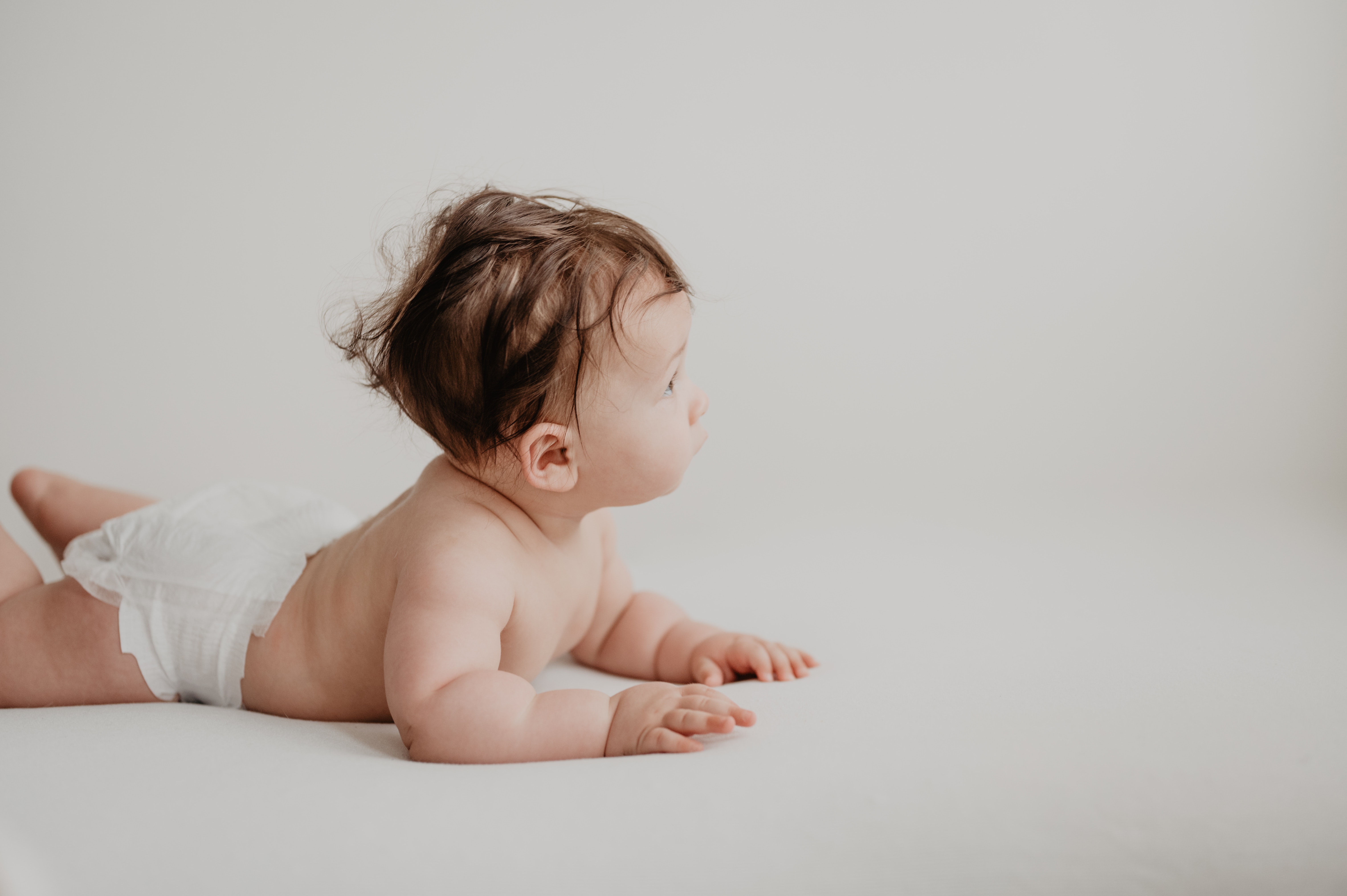
Positional Plagiocephaly & Helmets
What is it?
Positional plagiocephaly is when a child’s skull becomes flattened due to the same repetitive position. There is flattening on the back part of the skull with bulging on the opposite front of the forehead.
What are the long-term consequences?
Positional plagiocephaly is a purely cosmetic concern. There is no association between play positional plagiocephaly in infants and poorer cognitive outcomes. A study found poorer cognitive outcomes in school-aged children with persistent Plagiocephaly, which is distinct from the typical infant positional Plagiocephaly. Additionally, this study showed an association not causation.
Why so many helmets all of a sudden?
Babies are made to have soft skulls. Their skulls are made up of plates that have not yet fused. This allows the head to be molded into a shape that will fit through the pelvic canal during birth.
We are seeing increased amounts of positional plagiocephaly is multifactorial. As it is safer for babies to sleep on their backs and spend much time sleeping, overtime pressure in the same spot can lead to molding on the soft skull. As more and more parents follow safe sleep guidelines (started in 1992), we’ve seen a reduction in SIDS (about 40%) but also an increase in the amount of positional plagiocephaly (around 600%). Additionally, with the increase in technology, there has been an increased amount of time spent in containers, such as infant swings, doc-a-tot’s, car seats, strollers, etc. This is in contrast to prior methods used to soothe babies and go about daily tasks of living, which largely depended on baby-wearing. We are also likely more sensitive and, therefore, diagnosed more often. Some babies have a positional preference for sleep. Lastly, it is more commonly seen in firstborn children and males for reasons we don’t quite understand. Additional risk factors include twins (which has also increased with in-vitro), late rolling, and vacuum-assisted delivery.
How to minimize risk
The best thing you can do to prevent positional plagiocephaly is to limit container time and incorporate tummy time regularly until your child’s daily routine. Tummy time looks like many different things; for example, baby wearing or feeding chest to chest when your babies are on their belly and not on their head are forms of tummy time.
If you are starting to notice signs of positional plagiocephaly, the best thing you can do is repositioning +/- physical therapy. So if you notice that your baby is always looking to the left, occasionally put them down looking to the right. If your baby consistently looks to one side, please bring it to my attention. That can be a sign of torticollis, which increases the risk for positional plagiocephaly and should be addressed with stretches.
For most children with mild positional plagiocephaly, repositioning is the first therapy. For moderate-severe, it is repositioning + PT vs. helmets.
To Helmet or Not To Helmet
It is important to know that there are studies comparing repositioning +/- PT (conservative therapy) with helmets. Conservative alone resulted in 77.1% resolution vs. helmets 94.4%. Of the children who underwent helmets after failing conservative therapy, 96% achieved resolution.
Suppose you are going to choose to helmet based on the severity and age of the child. Generally, a referral would be made around four months. Helmetting will rarely occur before 5-6 months of age because there have been reports of potentially adverse sequelae on the immature brain due to helmetting.
What age is too old for a helmet
This therapy works for positional plagiocephaly because the bones of the cranium are still malleable under the age of one. They become less malleable after the age of one to some degree. So the 6-12 month window is optimal for this type of intervention.
What is involved in helmets
This therapy involves wearing the helmet 23 of the 24 hrs of the day. They need to be worn 7 days a week for, on average, 4-6 months.
Risks of helmets

In the summer especially, you can see pressure ulcers. There is also the potential for bald spots. The hair often regrows.
References:
Jung BK, Yun IS. Diagnosis and treatment of positional plagiocephaly. Arch Craniofac Surg. 2020 Apr;21(2):80-86. doi: 10.7181/acfs.2020.00059. Epub 2020 Apr 20. PMID: 32380806; PMCID: PMC7206465.
Collet BR, et al. Cognitive Outcomes and Positional Plagiocephaly. Pediatrics. 2019 Feb; 143(2). Pii:e20182373. PMID: 30635350



